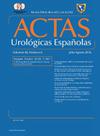Perfil de los pacientes con cateterismo intermitente limpio y consumo de recursos asociados. Estudio multicéntrico en España
IF 1.2
4区 医学
Q3 UROLOGY & NEPHROLOGY
引用次数: 0
Abstract
Introduction
Clean intermittent catheterization (CIC) is a technique used for bladder emptying in patients with neurogenic or non-neurogenic lower urinary tract dysfunction. CIC is considered the best option for most patients with dysfunctional voiding, as it improves their quality of life with a low complication rate. However, there is considerable variability in the management of CIC across regions and countries, as well as a lack of standardized guidelines. This study aims to determine the patient profile, associated complications and resource utilization related to the procedure.
Methods
This descriptive, multicenter, cross-sectional study was conducted in the functional urology and urodynamics units of 23 hospitals across Spain between April 2019 and April 2021. Patient characteristics were collected and stored in the Multicenter Studies Research Platform of the Spanish Urology Association.
Results
This study included 573 CIC users, with a mean age of 54.1 years (SD 19.1). Of the participants, 78.6% lived in urban areas, and 53.9% had additional comorbidities. The primary indication for CIC was spinal cord injury (29.5%), followed by hypocontractile neurogenic bladder (20.8%). Most patients performed one CIC per day (87.3%), with a median of 3. The most common complication observed was urinary tract infection (51.8%). Additionally, 95.3% of patients attended at least one urology consultation in the past year.
Conclusions
CIC is mostly indicated for neurological pathologies, and urinary tract infection is the most common associated complication. CIC is a fundamental procedure in functional urology units and is linked to significant healthcare resource consumption. Knowledge on the patient profile and the characteristics associated with CIC is crucial for comprehensive patient management, as it helps reduce and prevent potential complications while also informing healthcare strategies for more efficient resource management.
具有清洁间歇性导管作用及相关资源消耗的患者概况。西班牙的多中心研究
清洁间歇导尿(CIC)是一种用于神经源性或非神经源性下尿路功能障碍患者膀胱排空的技术。CIC被认为是大多数排尿功能障碍患者的最佳选择,因为它改善了他们的生活质量,并发症发生率低。然而,不同地区和国家的中投管理存在相当大的差异,而且缺乏标准化的指导方针。本研究旨在确定患者概况、相关并发症和与手术相关的资源利用。方法这项描述性、多中心、横断面研究于2019年4月至2021年4月在西班牙23家医院的功能泌尿科和泌尿动力学部门进行。患者特征被收集并存储在西班牙泌尿学协会的多中心研究平台中。结果本研究纳入573例CIC使用者,平均年龄54.1岁(SD 19.1)。在参与者中,78.6%居住在城市地区,53.9%有额外的合并症。CIC的主要适应症是脊髓损伤(29.5%),其次是神经源性膀胱收缩不足(20.8%)。大多数患者每天进行一次CIC(87.3%),中位数为3次。最常见的并发症是尿路感染(51.8%)。此外,95.3%的患者在过去一年中至少参加过一次泌尿科会诊。结论scic多用于神经系统疾病,尿路感染是最常见的并发症。CIC是功能泌尿科的一项基本手术,与重要的医疗资源消耗有关。了解与CIC相关的患者概况和特征对于全面的患者管理至关重要,因为它有助于减少和预防潜在的并发症,同时还为更有效的资源管理提供医疗保健策略。
本文章由计算机程序翻译,如有差异,请以英文原文为准。
求助全文
约1分钟内获得全文
求助全文
来源期刊

Actas urologicas espanolas
UROLOGY & NEPHROLOGY-
CiteScore
1.90
自引率
0.00%
发文量
98
审稿时长
46 days
期刊介绍:
Actas Urológicas Españolas is an international journal dedicated to urological diseases and renal transplant. It has been the official publication of the Spanish Urology Association since 1974 and of the American Urology Confederation since 2008. Its articles cover all aspects related to urology.
Actas Urológicas Españolas, governed by the peer review system (double blinded), is published online in Spanish and English. Consequently, manuscripts may be sent in Spanish or English and bidirectional free cost translation will be provided.
 求助内容:
求助内容: 应助结果提醒方式:
应助结果提醒方式:


